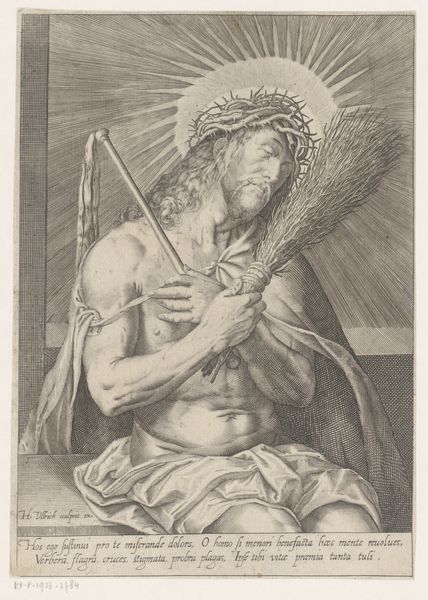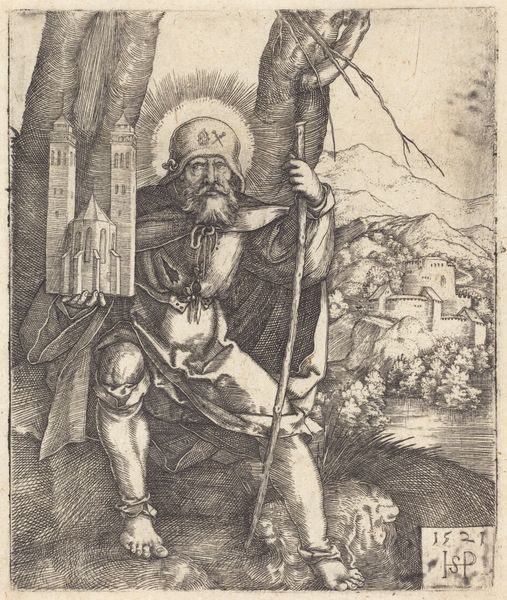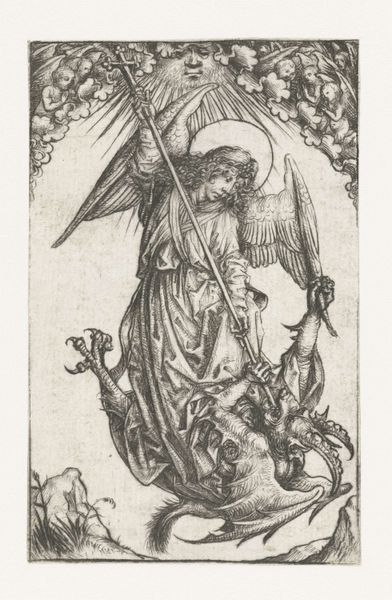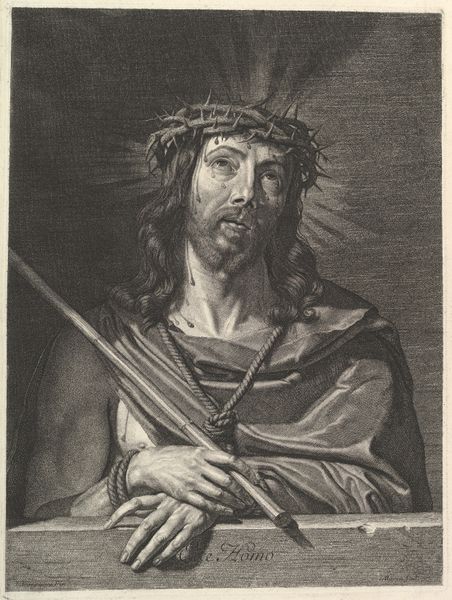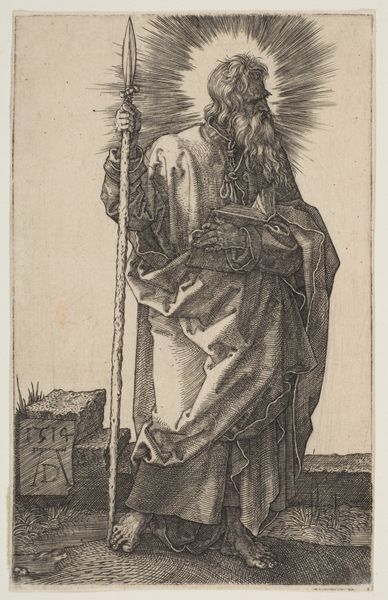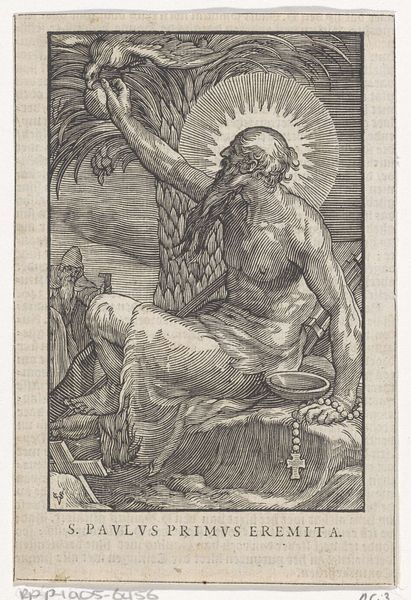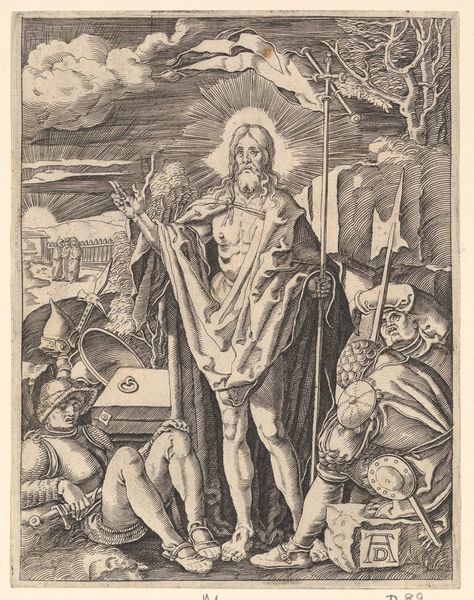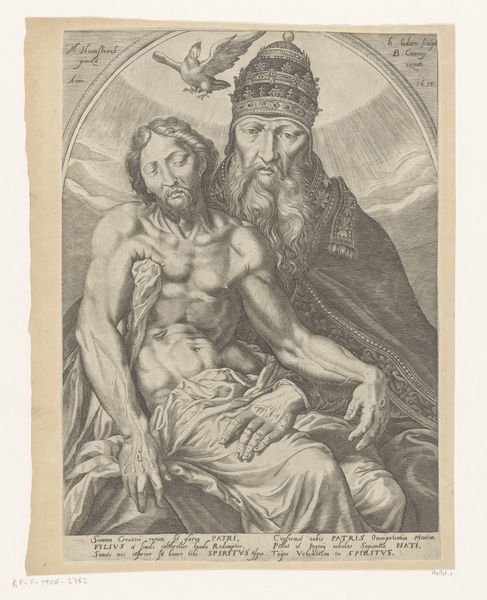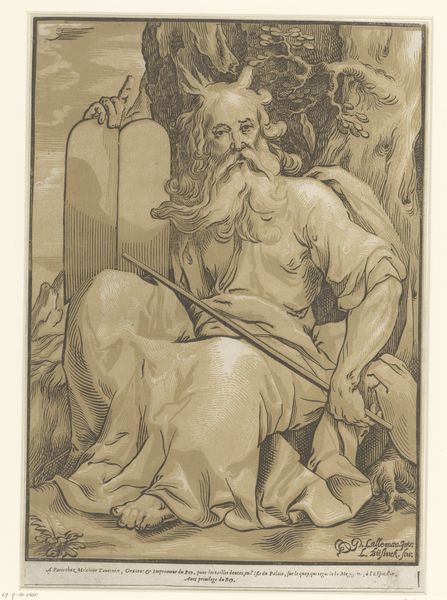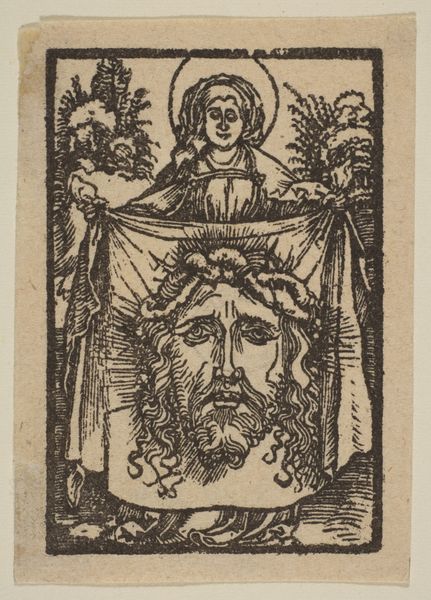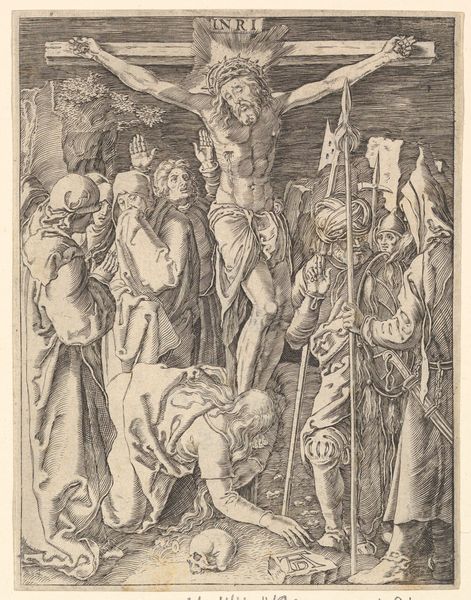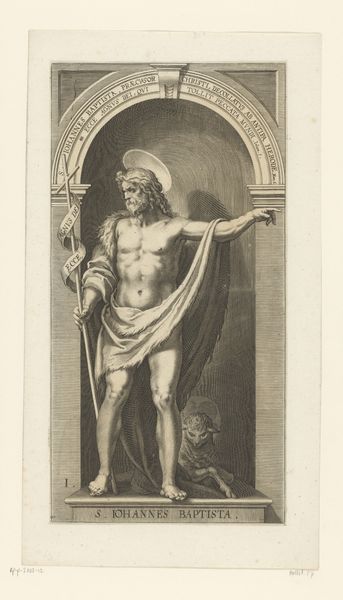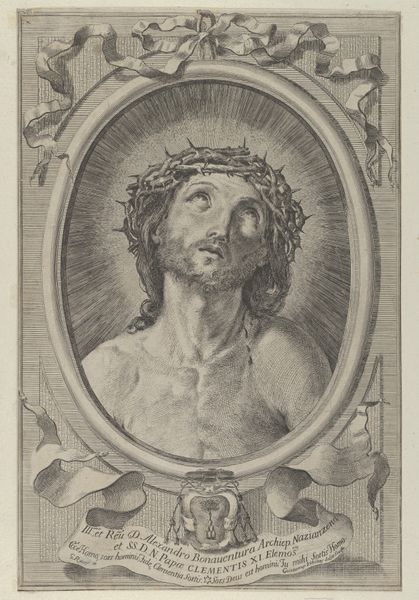
print, intaglio, engraving
#
portrait
# print
#
intaglio
#
old engraving style
#
mannerism
#
figuration
#
pencil drawing
#
chiaroscuro
#
line
#
portrait drawing
#
history-painting
#
engraving
Dimensions: height 534 mm, width 378 mm
Copyright: Rijks Museum: Open Domain
Curator: Let's examine this engraving from the late 16th century, titled "Christus als Man van Smarten," or "Christ as the Man of Sorrows," by Giuseppe Scolari. Editor: My immediate impression is one of intense suffering, powerfully conveyed through the sharp lines and contrasts. There's a deliberate theatricality in the presentation. Curator: Absolutely. Consider the historical context. This print emerges from a period deeply affected by religious and political upheavals. Images of Christ’s suffering were often used to evoke piety, obedience, and sometimes, even to critique the Church’s own excesses through veiled parallels. Editor: I notice the engraver’s focus on texture – the rough crown of thorns, the smoothness of Christ’s skin juxtaposed with the deeply etched wounds, even the patterns of the drapery in the background. All of these elements amplify the starkness of his presentation. There's a near-obsessive level of detail. Curator: And this precise, linear style owes much to the Mannerist movement, characterized by exaggeration and artifice, deliberately playing with form to create dramatic impact. Scolari positions Christ centrally, bathed in this almost otherworldly light, presenting him not as a victorious savior, but as a vulnerable, wounded figure. Editor: That halo-like radiance emphasizes the spiritual dimension but the realistic, even unflinching, depiction of physical torment anchors the image in human experience. The viewer is compelled to confront both the divine and the brutal. It’s almost confrontational. Curator: It reflects the complex relationship between the Church and its audience at that time. The image acts as a tool, a conduit for religious thought, designed to resonate within very specific political and spiritual discussions of the era. Editor: This detailed manipulation of light and line serves not just a devotional purpose, but elevates the work to a highly sophisticated visual experience, demonstrating complete mastery over the medium. The technical virtuosity on display truly underscores its impact. Curator: In observing how Scolari blends this artistic style with such charged subject matter, we can learn much about the evolving role of art within the religious landscape of the 16th century. Editor: A lasting impression; a somber and beautifully rendered work.
Comments
No comments
Be the first to comment and join the conversation on the ultimate creative platform.
